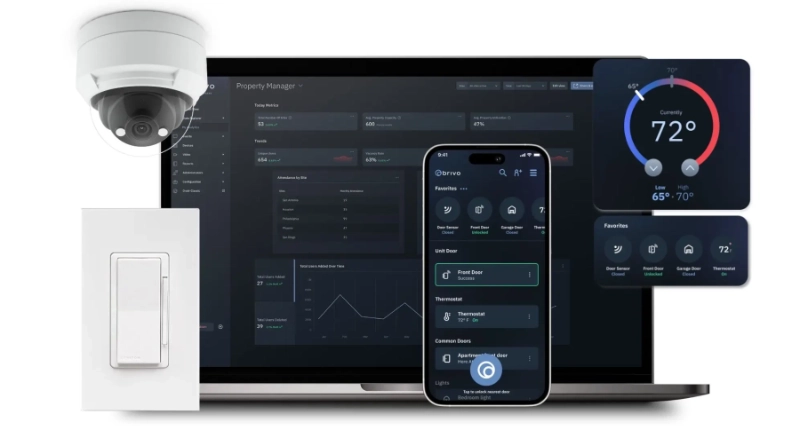The COVID-19 vaccine has arrived and more and more Americans have started the process of getting vaccinated. In fact, the CDC reports that as of May 20, 48% of the U.S. population has received at least one dose of the vaccine.
The U.S. government is responding to this change in our population’s immunization to COVID. Just last week the White House announced that their America Rescue Plan, aimed at creating measures to remove barriers to work, will provide funding to address the child care crisis caused by COVID to help parents who need or want to work, to return to their jobs.
As the rollout of the vaccine and new economic policies continue, there is one question on most of our minds: what does that mean for the corporate world? Will there truly be a “return to the office”?
Knowing this was a question also on the minds of most business executives, Brivo recently completed their 2021 Return to the Office survey amongst U.S. employees to try and understand what sentiment is towards returning to the office. The 2021 Return to the Office survey was conducted with WhosOnLocation, a provider of people presence management software, by asking employees across all geographic regions in the U.S., and across all types of industries.
Survey results
The 2021 Return to the Office survey found that 53% of workers expect to be back in a physical office full-time within the next six months. However, 59% of respondents have expressed health and safety concerns about returning.
The biggest concerns amongst those surveyed about returning to work are office hygiene and protective measures, proximity to other workers, exposure during commuting, and effectiveness of contact tracing.
Of the 59% of respondents who expressed health and safety concerns about returning, the highest levels of anxiety emerged from personnel in a few key sectors: professional services, such as finance, IT, recruitment/HR (72%), and creative services, including voluntary/charity workers, marketing/PR, arts & design (62%).
When asked which solutions would give them the most confidence in returning, the results showed that 49% prefer temperature scanning as the main solution, with limiting the number of people on site (39%), touchless door entry (34%), and mask detection (32%) close behind. Touch-free sign-in and sign-out for contact tracing and social distancing measures were also highlighted, at 30% and 29% respectively.
The complete results from the survey can be found here, including more details on why businesses are returning to the office, how COVID has changed employee needs and ways employers can address workplace concerns through touchless technology and access control.
The solution
So how do corporations offer a return to the office option to employees in a way that will make them feel that their health-safety is a top priority? The answer is technology. The right technology can help enforce new health-safety protocols and ensure compliance, without breaking the bank. In fact, if you are currently using a modern access control solution, you likely already have the tools to implement some of these new health-safety initiatives today.
Recently, organizations have been creating policies to allow vaccinated employees back to the office, and limit capacity in the office and within specific conference rooms. Access control systems can support implementing these policies in the office, without the need to add any additional tech. Managing these return to the office policies can be achieved in practice by utilizing your modern access control solution to its fullest. To manage occupancy limits and set access policies to enforce, Brivo’s system has Occupancy Tracking right in the existing system to provide our customers with greater control as they plan to re-open.
Brivo provides technology solutions to help businesses protect the health and safety of their employees, customers, contractors, visitors, students, and residents as they re-enter facilities. Organizations can leverage the Brivo Facility Safety Features to protect everyone in their buildings and improve access control and on-site safety and security as we navigate a return to physical office locations. Tools include occupancy tracking, contact reporting, personnel control, visitor management and reporting, touchless sign-in and mobile self-screening.













